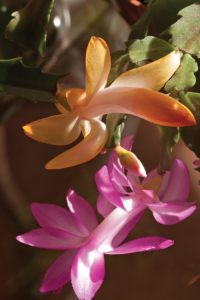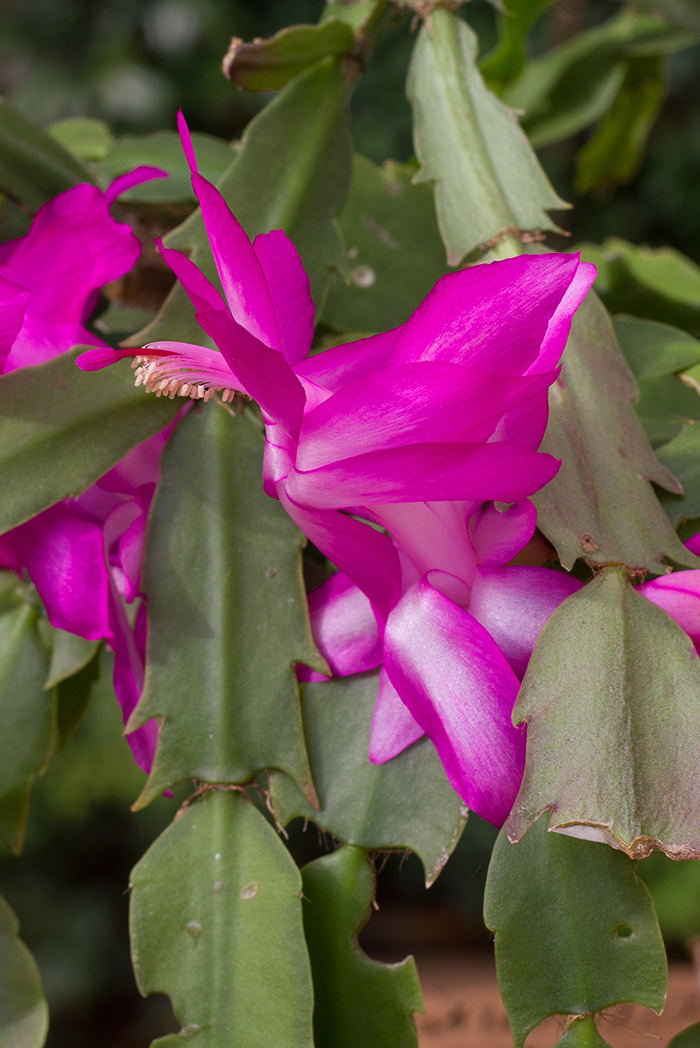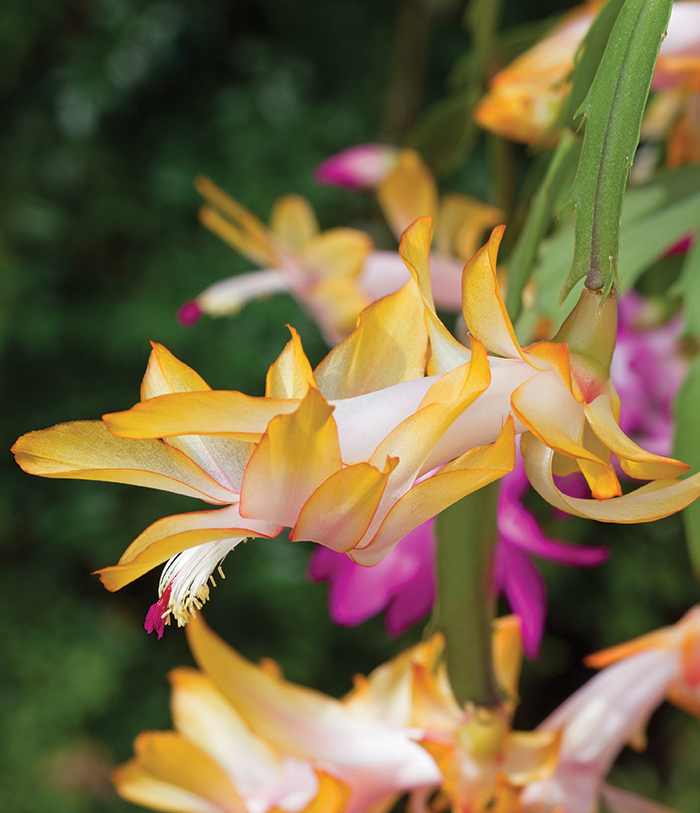When it comes to Yuletide oddities, the Christmas cactus is a real contender. True, its colorful, conical flowers can be festive additions to any year-end holiday setting, but all is not what it seems with this strange plant.

For starters, the Christmas cactus is not a typical cactus. It hails from the rainforests of South America, meaning full sun, desert sand and a Gila monster or two will not make it feel at home.
Christmas cactus isn’t hardy enough to stand winters outdoors around here, but it can be a dependable, year-round houseplant. True to its origins, this tropical plant is sensitive to full sunlight, so the best place for it is a room brightly lit with indirect natural light. In the late spring through the summer, it can vacation outdoors in an area of light shade.
Christmas cactus prefers a quality, well-draining potting mix. Its container should normally be watered once a week or when the top quarter-inch of soil feels dry to the touch, but, deep in the winter when the plant takes a break from growing, this chore can be extended to once every two to three weeks.

Thanksgiving Cactus
Pssst! Ya wanna know a secret? The “Christmas cactus” often found in bloom at garden shops right around the Thanksgiving season, when retailers are shifting into full holiday selling mode, is more than likely the Thanksgiving cactus (Schlumbergera truncata), because November is usually the time it flowers.
It has pointed leaf segments, as opposed to the true Christmas cactus (Schlumbergera bridgesii), which has more rounded segments and blossoms a little later, normally right around … well, I’m sure you have that special day figured out. Even with slightly different looks and bloom times, both have the same growing requirements.
If you enjoy pampering houseplants, keep in mind indoor greenery such as fiddleleaf fig, philodendron, rubber plant, dracaena and croton that have large, smooth leaves will show off better if they are wiped at least once a month using a soft cloth lightly moistened with warm water. This will not only dispatch the occasional six-legged pest, but it will also perk up the foliage coloration of such houseplants. This leaf cleaning will remove surface dust that can interfere with these potted pretties’ all-important photosynthesis process.
Being from the tropics, this succulent will appreciate humidity. The dry air inside a house can be offset by misting daily and placing its pot on a tray of pebbles and water.
Nutrients, of course, energize a Christmas cactus, and a weak solution of liquid houseplant fertilizer added once a month will do the trick. However, due to it wanting to rest in the winter, nix fertilizer applications during the coldest months.
While it is true that Christmas cacti can be fine-tuned to bloom just in time for Santa’s visit, this involves providing 14 hours of continuous darkness in a cool (around 55 to 60 degrees F) area each night for six weeks, which, quite frankly, is more effort than I care to put into ANY plants! I’m just fine with mine flowering any time they want, which is usually somewhere between November and late December. As a bonus, they will often stage an encore bloom show in the spring.
To maintain its flower power, a Christmas cactus should be repotted about every three years. Also, its flat, segmented stems can become long and lanky, but a springtime pruning will keep them in bounds and promote branching — and more blossoms.
Cuttings can be easily rooted in moist potting soil to produce even more Christmas cacti that might or might not be in bloom at Christmas, but whenever their flowers do pop out, they sure will be pretty!
In December
Like Christmas cacti, poinsettias prefer a humid environment indoors, so water them regularly, mist the leaves daily and keep these holiday beauties away from vents that blow warm, dry air.
Remember your feathered friends this winter by regularly cleaning and refilling the birdbath and feeder. Also, on extremely cold days, remove ice from the birdbath, and replace it with fresh water.
In January
The beginning of the year is a good time to search seed e-catalogs online for selections that were dependable for you in the past as well as for enticing new introductions. Now is not when you plant most annual and perennial seeds, of course, but ordering early helps assure any picks you make won’t be tagged at checkout by the dreaded “Out of Stock.”
For watering plants, the garden hose won’t get much of a workout this month, but it can still be useful, especially if you are thinking about adding another bed to the landscape. Use its long length and flexibility to create the curves and swerves of a potential outline for the new planting area before any digging is done.







